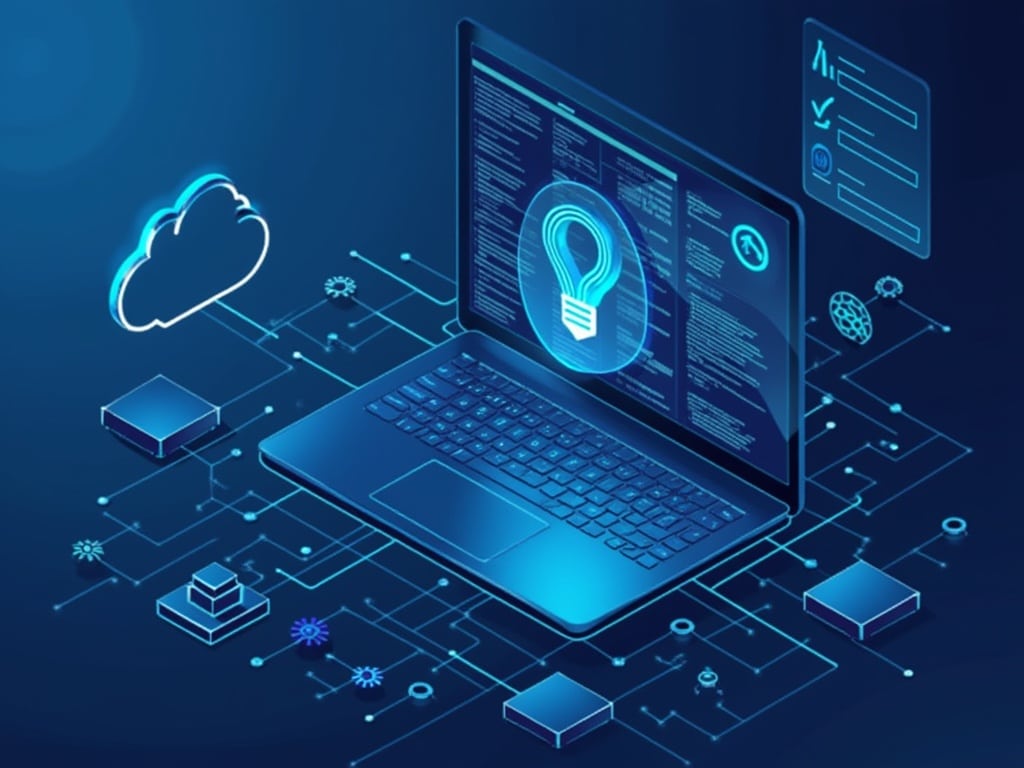Disaster Recovery Solutions: Essential Strategies for Business Continuity

Business operations rely heavily on effective disaster recovery solutions, with system downtime costing companies $5,600 every minute. I’ve found that merging on-premises infrastructure with cloud-based solutions creates a powerful shield against disruption. This approach, supported by AI monitoring and automated systems, cuts hardware expenses by 50% while maintaining superior protection compared to legacy systems. Key […]
Cloud Service Management: Optimizing Efficiency and Reliability

Cloud service management has transformed into a powerful system covering IaaS, PaaS, and SaaS models. AWS dominates the market with 32% share, while Google Cloud holds 11%. Today’s cloud management combines AI-powered analytics, multi-cloud coordination, and automated monitoring tools. These components work together to perfect resource allocation, maintain security standards, and control costs across cloud […]
Network Infrastructure Solutions: Enhancing Connectivity and Performance

Network infrastructure solutions are transforming business connectivity by combining cutting-edge components like routers, switches, and AI-powered management systems – delivering up to 35% higher productivity. Strong security measures, such as Zero Trust architecture and layered protection, work with performance optimization through smart traffic analysis and machine learning to create dependable, efficient enterprise operations. Key Takeaways: […]
Microsoft Azure vs Google Cloud vs AWS: Comparing Key Features and Benefits

The cloud computing market continues to evolve, with Amazon Web Services commanding 32% market share at the top spot. Microsoft Azure follows at 23%, while Google Cloud captures 11%. Each provider brings unique strengths to their offerings. AWS stands out with its extensive service catalog. Azure shines through Microsoft ecosystem integration. Google Cloud sets itself […]
IT Audit Services: Enhancing Business Security and Compliance

I leverage IT audit services as a powerful shield that combines AI-powered analytics, cloud platforms, and blockchain technology to protect business assets and maintain regulatory compliance. My approach integrates advanced frameworks like COBIT 2019 and NIST, while using artificial intelligence and machine learning to spot patterns, anomalies, and potential security threats with remarkable precision. Key […]
How Can IT Services Improve Cybersecurity? Key Strategies and Solutions

Cybersecurity threats continue to intensify as ransomware attacks employ double extortion tactics, putting businesses at risk regardless of their size. I’ve seen firsthand how advanced technologies like AI-powered threat detection, strict access control systems, and staff training create an effective shield against cyber attacks. My approach focuses on layered security measures that adapt to emerging […]
What is the Difference Between IT Outsourcing and Managed Services? Explained Clearly

Technology support comes in two primary forms: IT outsourcing and managed services. Outsourcing tackles specific projects or tasks, while managed services deliver complete IT support day-to-day. These approaches differ in their core service models – outsourcing works on individual projects with changing costs, while managed services maintain your systems continuously for a set monthly fee. […]
How Do I Choose the Right IT Service Provider? Essential Tips for Businesses

Finding an IT service provider takes serious consideration of several key elements – technical skills, security qualifications, service agreements, and growth potential. Your ideal partner needs strong certifications, proven experience, straightforward pricing, reliable support, and a clear understanding of your company’s goals. Key Takeaways: Search for providers holding important certifications such as CISSP, CompTIA Security+, […]
How Much Do IT Services Cost? A Comprehensive Breakdown

IT service costs in 2024 range from $2,500 to $15,000+ monthly for businesses, with per-user pricing spanning $150-400 per user and device-based pricing between $50-150 per device. Market growth surged to $23.21 billion in 2023, showing strong adoption of professional IT support across organizations of all sizes. Key Takeaways: Basic cybersecurity protection costs start at […]
Microsoft Exchange Server End of Life: Upgrade or Migrate?

Here’s my response with the text formatted in correct HTML: Microsoft’s deadline for Exchange Server 2016 and 2019 support ends October 14, 2025, pushing organizations to make critical migration decisions. Your business must choose between moving to Exchange Online through Microsoft 365 or upgrading to the new Exchange Server SE. Each option matches different business […]
